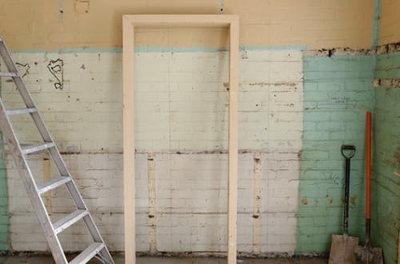I am studying construction project management at university. I am from a city with a lot of old houses, and I am thinking about starting a business to rehab and sell them. The city is growing and there are a lot of young people moving in. Since I have the skills to be a general contractor, I think this might be a good idea to pursue. Is this a good idea, or am I building my life on a shaky foundation?
Your idea sounds like an interesting one. Cable channels are awash in shows like Rehab Addict and Windy City Rehab, and the life of a serial rehabber can seem appealing and lucrative. However, this idea is one that will come with a lot of risks and potential downsides. Depending on the city that you are in, you will probably need a lot of up-front money, both to purchase a property and to complete the rehab (even if you act as your own general contractor). You will need to be prepared for some of the most complex parts of rehabilitation, such as sewer repair. Finally, you will need an exit strategy. Below, we’ve enumerated those risks, and potential ways around them.
Since you are studying construction project management, you are probably well-aware of how much money construction takes. Everything seems to take more time and more money than initially thought. According to HomeAdvisor, the national average for a rehab is $42,829. On top of that, you need to consider the cost of purchasing a property and the other costs that come associated with owning a small business, such as legal and incorporation costs. If you have a strong credit rating and a substantial investment from friends, family, or other investors, you will have a cushion. Before you do anything else, you should sit down with an accountant or attorney and talk through your plans. They can help you shelter yourself from risks moving forward.
Once you begin the rehab process, you will likely find yourself surprised by the work that needs to be done. While an old house has charm, one purchased for the sake of rehabilitation will also likely have lots of problems. One of the most expensive and time-consuming processes of rehabilitating old houses involves ensuring that the sewage system is in good working order. According to Houselogic, the typical lifespan of a sewage system is 20-30 years. Whether the old house you have your eye on is hooked to a municipal sewage line or a septic tank, a renovation will probably involve extensive work on the plumbing stack. You will want to consider cost-efficient methods such as trenchless rehabilitation. Prime Line Products has several solutions for trenchless sewer cleaning and sewer repair. An investment in this type of equipment will not only come in handy as you grow your business, but is often tax-deductible for an aspiring house-flipper.
Finally, you need an exit strategy. You may be able to restore an old home to a place that surpasses its former glory, but if you don’t have a way to sell it, you will be left footing the bill. One way to avoid this is to work, from the beginning, with an eye towards a specific market. Are you rehabbing for a family, a solo professional, or multiple renters? When they rehab a house, a lot of people imagine that others want a house that has been restored exactly to its former glory. But according to this article on Curbed, much of our nostalgia for the architecture of the past is based on unrealistic expectations of what old houses were like, and what contemporary families need. If you don’t have a thorough understanding of your market, you may end up sitting on your investment for years, scrambling for a second job. To prevent this, integrate yourself with the housing professionals in your city such as real estate agents, architects, and other contractors who can help spread the word about your good work.
Content Provided by Scholarship Media


